
Here are simple steps to repot a peace lily houseplant. Do you need to repot a peace lily houseplant—or another type of houseplant—but aren’t sure where to start? This post will explain what to look for when your peace lily (Spathiphyllum) is ready for a larger pot. I will also show you exactly how to repot your peace lily houseplant step-by-step with photos.
The following steps can also be used to repot other varieties of houseplants. These include pothos, monstera, snake plant, fiddle leaf fig, African violet, money tree, jade plant, and more. For more information about some great house plant varieties, read Best Flowering Houseplants.
Does Your Peace Lily Need a Bigger Pot?
You won’t know for sure if your peace lily is root bound unless you take it out of the pot and inspect it. But here’s what to look for that indicates your plant is ready for a bigger pot.
You may notice at least one, if not more, of the following:
- The surface of your potting mix has become a hard mat of roots. When you touch the surface, there is very little loose soil.
- There may be many roots coming out of the drainage holes.
- You find it harder and harder to keep up with watering.
It’s Time to Repot a Peace Lily Houseplant
If you’ve observed at least one of the items mentioned above, your plant is probably root bound. Your plant needs to be repotted. Just use the six easy steps below.
Step 1 – Remove your peace lily from its pot
If your plant is in a nursery pot, it should be quite easy to remove from the pot. Simply squeeze around the perimeter of the pot to loosen up the root ball. Then tilt the plant on its side, and gently pull it out.
If your plant is in a rigid pot, pass a knife blade around the perimeter of the pot. That should loosen it. Then gently remove the plant from the pot.
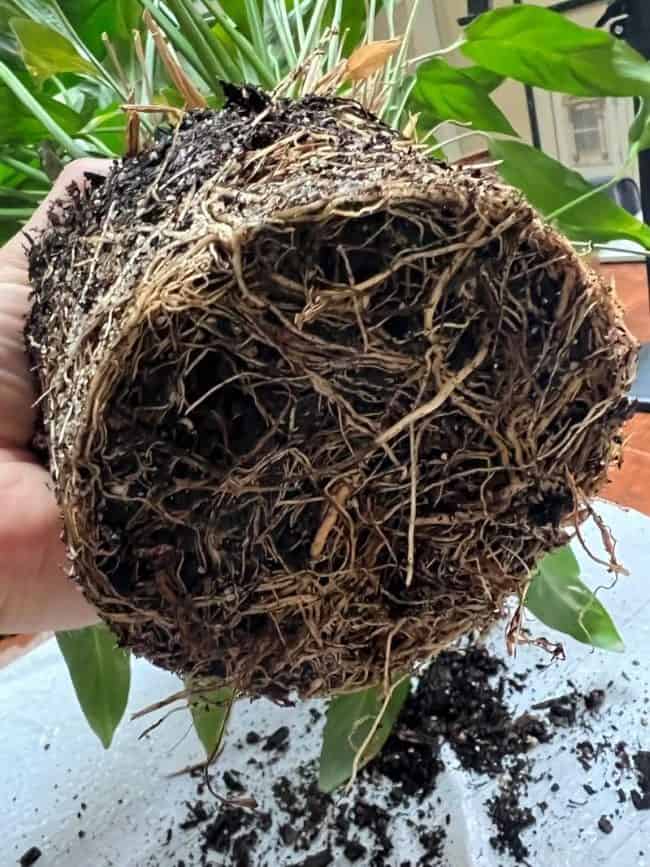
Step 2 – Loosen the root ball
This is a step that many people miss. But it is critical, particularly if your plant is very root bound like in the photo above.
Many years ago, before I knew any better, I had a peace lily that was extremely root bound. I had not loosened the root ball at all, and I proceeded to place it in a larger pot.
A year or two later, the plant was not growing well. So, I took it out of the pot again. I was shocked to see there were NO new roots that grew into the new pot.
You can get away with not loosening the root ball if your plant isn’t particularly root bound. But it is absolutely necessary if your root ball looks like the one in the photo above.
I like to grab the root ball with both hands. I dig my fingers into the bottom first and loosen things up a bit. Then I work my way around the perimeter. It should look something like the photo below.
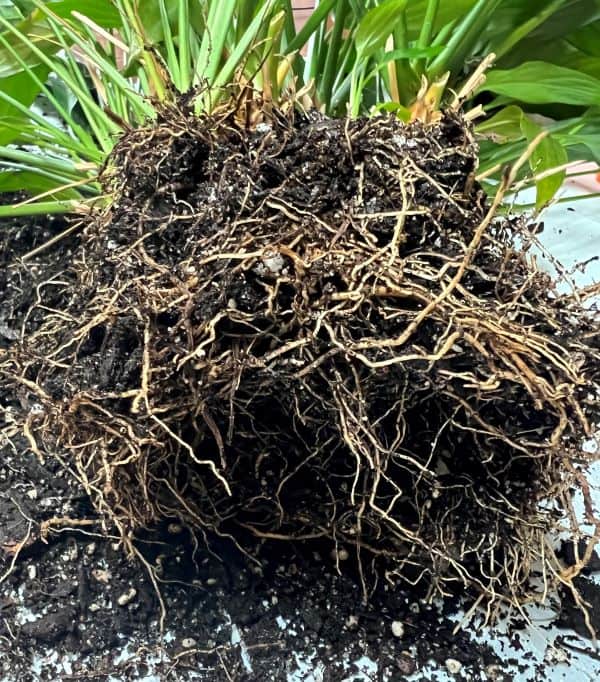
By loosening the roots, you ensure they will be able to more easily grow into your new potting mix. Don’t worry about breaking a few roots here and there. It will not harm the plant.
Repot a peace lily houseplant Step 3 – Select a pot
Here’s a rule thumb that I stick with when repotting. (Technically, what I am describing is called “up potting.)” That’s when you’re putting a plant into a larger pot. The rule is simple: only go up one pot size.
For example, my peace lily was previously in a 6-inch diameter pot. I chose an 8-inch diameter pot as its new home. If you need a new pot for your plant, click here to buy a ceramic pot. All of these plants have an all-important drainage hole.
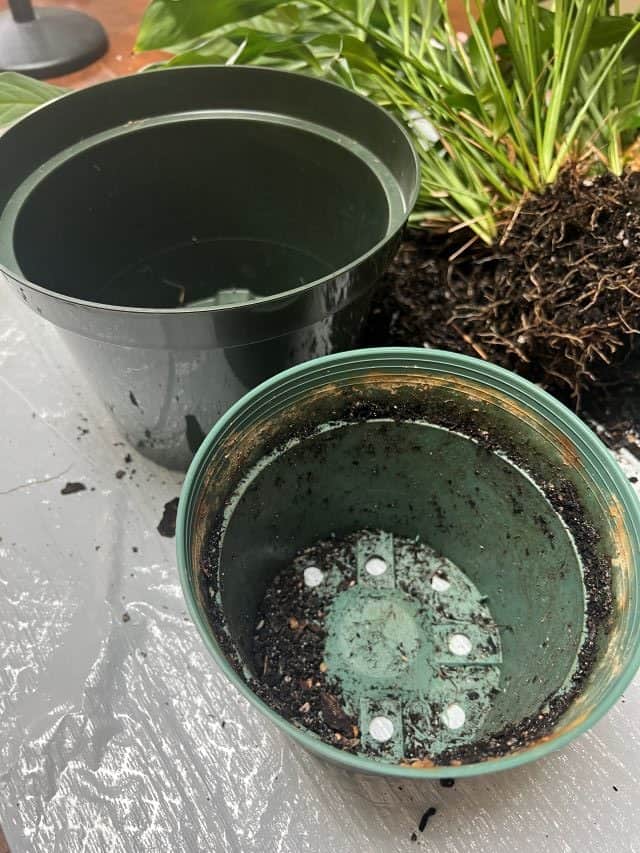
This is not a strict rule, but it is beneficial in many cases. If you place your plant in a pot that is significantly larger, the excess volume of soil takes longer to dry out. This can lead to plant-health issues in the future.
Step 4 – Select a potting mix
Peace lilies are moisture loving plants. That’s why I like to use a potting mix that is moisture retentive, but has good porosity.
Mix approximately 3 parts of indoor all-purpose potting mix with 1 part of perlite. This combination will create the perfect mix when you repot a peace lily houseplant and most other houseplants. Click here for a complete selection of potting mixes.
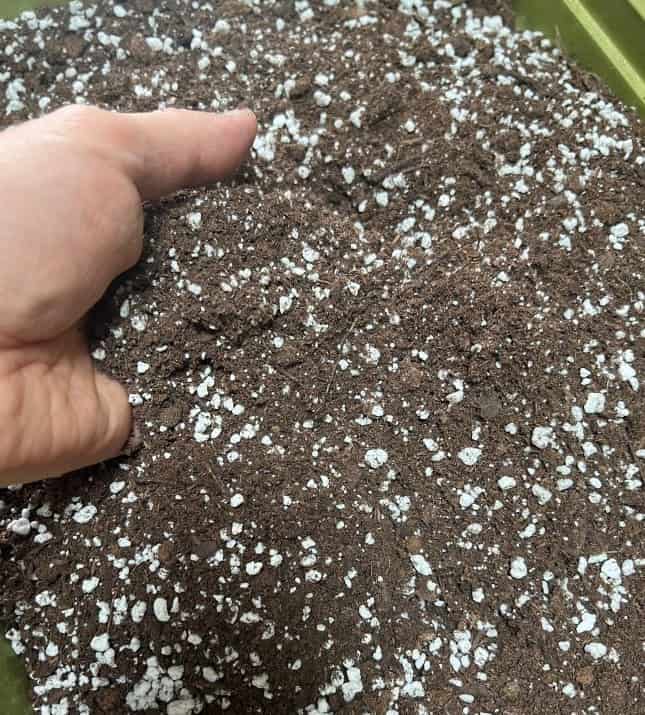
Step 5 – Pot up your peace lily houseplant
You may need to play around a bit in this step when you repot a peace lily houseplant. Add a little bit of your potting mix at the bottom of the new pot.
Then place your plant in and see if the level is right. You’ll want to leave about ½ inch from the top of the final soil level to the rim of the pot. (This will create a “water reservoir” for when you water. It prevents making a mess spilling soil and water all over the place.)
So, if your plant sits up too high in the pot, remove some potting soil from the bottom.
When the level seems right, continue to add soil around the perimeter of the pot. Gently press down to ensure that there are no large air gaps.
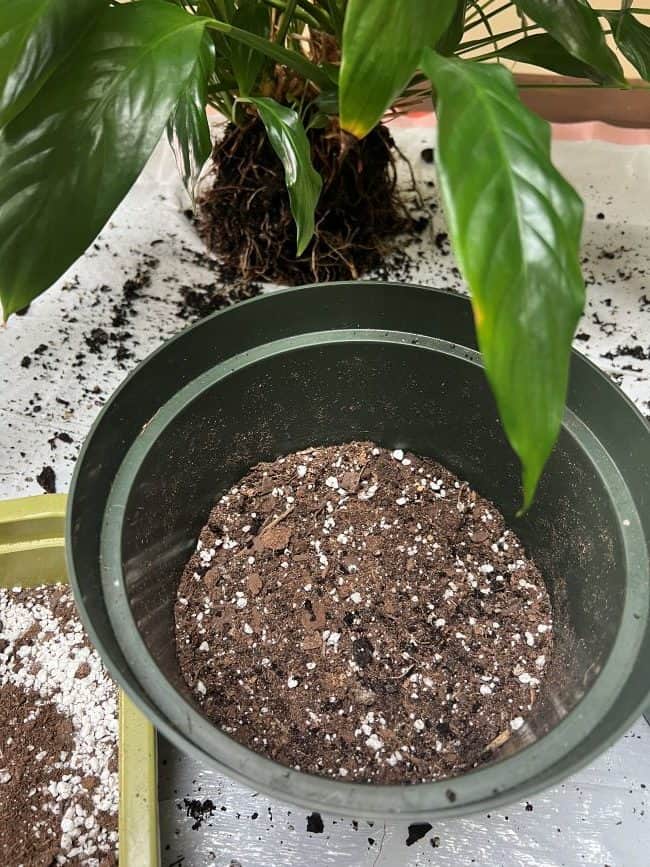
Step 6 – Water your plant
Lastly, give your peace lily a good, thorough watering. This can be tricky when you water fresh potting mix for the first time. Sometimes, bagged potting mix is very dry and it takes a bit of work to condition it to accept water.
Take your plant to a sink, or even to a bathtub or shower, and give it a good watering. Allow the water to soak in. Depending on how dry it is, it may take a minute or two. Then feel the potting mix with your fingers. If there are still dry pockets of soil, water it again. Keep repeating until the potting mix is evenly moistened.
After you’ve given it a thorough watering, the potting mix should also appear a bit darker than it was initially.
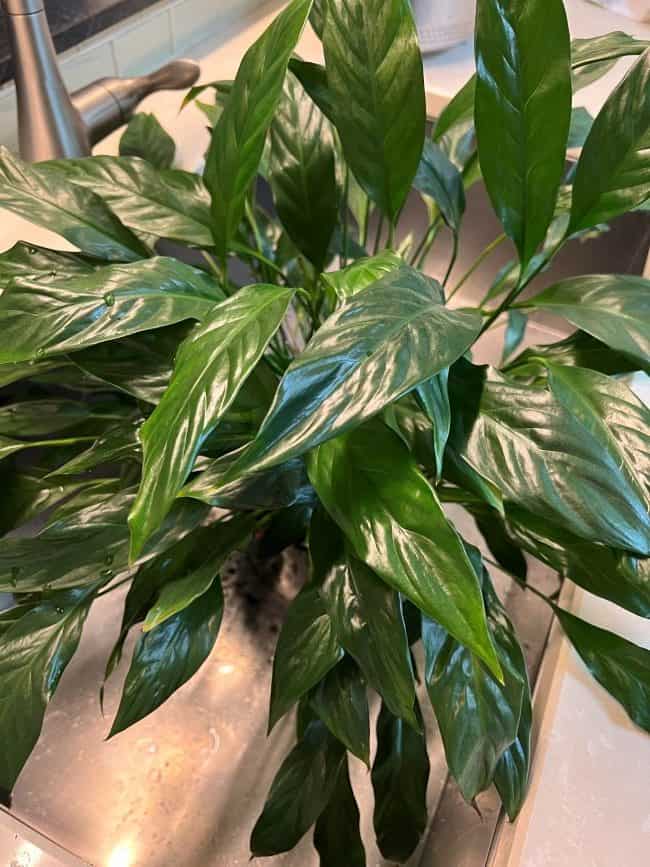
Final Touches to Repot a Peace Lily Houseplant
You may have chosen to repot a peace lily houseplant into a plastic nursery pot. If so, feel free to slip it inside of a decorative cachepot if you’d like.
Once you are done, place your plant in its growing location and watch it grow and bloom!
For more houseplant tips, check out my website blog at ohiotropics.com.
Looking for a good houseplant fertilizer? Click here!
Home Garden and Homestead is a Amazon affiliate. We receive a small commission from sales generated by the links in our stories (at no cost to you). Thank you for supporting this website.


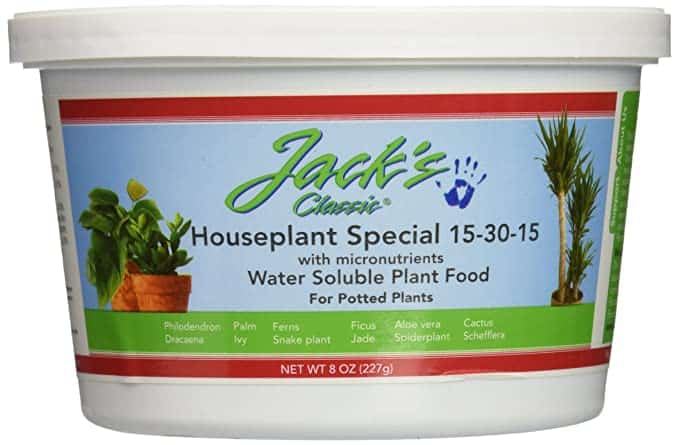

I appreciate the helpful step-by-step photos — and have to admit I’m too lazy to do step 2 — I give the rootball a little rough treatment, but not as thorough a loosening as I should.
A peace lily was my very first houseplant! This is the plant that started it all!